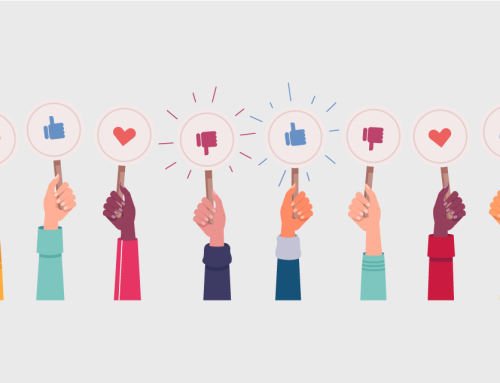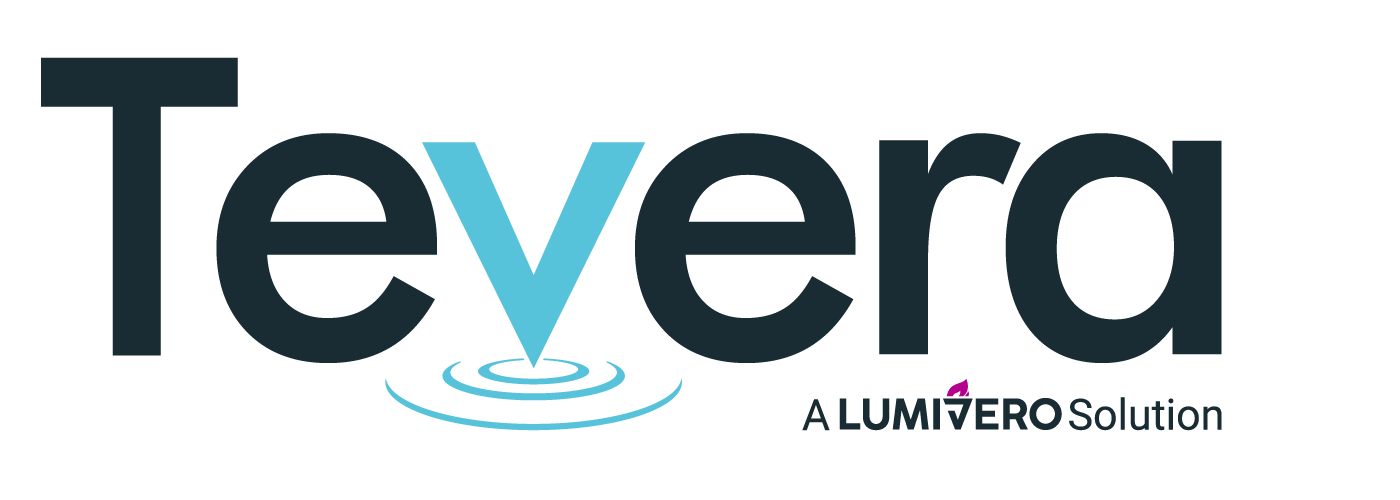How Social Workers are Using Technology and Data to Improve Public Health
More than any other profession, social workers have long been aware that a person’s wellbeing is affected by everything from their access to transportation to financial wellness to their physical and mental health. Now, social workers are using data-sharing and technologies like artificial intelligence and machine learning to improve public health. Social work programs across the U.S. are embracing technology and harnessing the power of data to better manage the future of their school and prepare their students for the future.
What does data-sharing have to do with public health?
The need for skilled social workers isn’t disappearing anytime soon. The Bureau of Labor Statistics estimates that over the next decade, the number of social work jobs will grow by 11%. At the same time, technologies and resources like big data and artificial intelligence are also growing in capabilities. These tools can help link previously separate spheres (like transportation access and mental health histories) to better understand correlations between health information and socioeconomics and demographics.
Social work programs need to help set their students up for success in this data-heavy future by embracing technology today so their alumni can help more efficiently and effectively heal people in the future.
When data is sharable, knowledge becomes more accurate. For example, electronic health records and public health databases are enormous depositories of data that should be leveraged to provide better treatment for more successful outcomes. Combining sets like these can result in a myriad of public health benefits including:
- Increased cross-sector collaboration and solution building.
- Broader sample sizes for more accurate findings.
- Faster data collection and identification of opportunities for intervention.
- Faster deployment of solutions and industry best practices so communities aren’t left behind.
- A more complete picture of the state of the nation’s health as well as smaller communities within it.
However, understanding the benefits of data-sharing does not mean it is easy to do so. Currently social work graduates enter a field filled with outdated systems, complex laws, and resistance to change. They need to be aware of the challenges they face so they can help change it and build a more collaborative industry that affects large-scale change like never before.
Barriers to Data-Sharing
Recently The State of Data Sharing at the U.S. Department of Health and Human Services (HHS) was released. It examined how the government can share data to more efficiently create value to help entrepreneurs, researchers and more and “use data to generate new products and services, build businesses, and create jobs.”
These findings echo many of the same obstacles social work programs experience when building core processes and laying a foundation for a successful, data-centric business and shed light on how these barriers might be overcome. Programs need to help their students understand the importance of data-sharing and what obstacles currently exist.
Challenge #1: Siloed Data Centers
One of the largest challenges to increasing data sharing is simply that people don’t know where certain data sets are stored. Each department or agency manages their own information and sharing happens on an ad hoc basis. Valuable knowledge is lost because people just don’t know where the information they need is, or that it even exists in the first place. HHS says that this “can lack transparency, transferability, accountability, and consistency.”
Even if your students don’t end up working for HHS, it’s more than likely that they’ll run into similar silos at their own agency. Helping them learn tactics for flattening organizations and breaking down silos will help them access the information they’ll need to do their jobs.
Challenge #2: Outdated Technology
Legacy infrastructure systems are a plague on effective use of data. Schools and agencies that still rely on paper or spreadsheets are wasting precious resources and doing themselves a disservice. Any person or organization that wants to utilize data efficiently needs to have files that are machine-readable and have access to software that helps them analyze it.
If your students are comfortable with learning new technologies, they’ll bring that can-do attitude to their employer and help implement changes that will help them better serve their clients. Schools can also implement new, inexpensive technologies to introduce their students to this process.
Challenge #3: Compliance and Resource Constraints
The government has to deal with a complex web of regulations that luckily, schools don’t have to navigate. However, your students will have to understand how policies and organizational habits play into how data is (or isn’t) shared in the field. Regulations and privacy concerns makes it hard for agencies to access relevant information and collaborate to form effective and efficient solutions for people.
Regulations
Most large-scale and reputable data collection efforts, like the Census, are tightly monitored. Who can access the results and how those results can be shared is limited, partly to respect privacy laws and partly because the policy was written before current technologies like Artificial Intelligence existed. If your students need to work with these data sets, not only will they need to understand who owns each but also which statutes apply to which sets and sometimes, will need to learn how to change them to broaden access and leverage the data to its full potential value.
Privacy Concerns
The good news is that data privacy is a top concern for social work agencies and governing bodies. The bad news is that microdata, which helps analysts understand local trends and how small changes in one variable can impact people and communities differently, can teeter on the edge of privacy concerns. As the HHS notes, “The risk of identifying geographic areas or violating individual privacy increases as more variables and more granular data are collected and shared, often leading to an increase in limits on microdata access.” Your students will need to know how to keep data secure as well as how to use it in a way that doesn’t violate privacy laws.
How Social Work Programs can Embrace Technology and Prepare Students for Their Careers
Academic programs are already prepping for this technology-laden future. The Columbia School of Social Work just launched a new minor for their social work students: Emerging Technology, Media, and Society. The tech portion of this degree will “provide the social, conceptual, and technical fluency necessary to explore applications of artificial intelligence (e.g. machine learning, natural language processing) and other emergent technologies (e.g. virtual reality) to complex social issues.”
Schools don’t need to implement a whole new degree to start introducing more digital skills. Simple steps like examining your statistics classes and ensuring they’re using real-world case studies can help introduce students to what they’ll experience in their career. Even tools like time-tracking software is habit-forming so that when students have to enter their billable time, they’ll be used to the steps and have practiced on a similar interface.
Readying your students for the future doesn’t need to be overwhelming. Software tools and services exist that can help introduce programs and students alike to new skills. One of the best first steps programs can take is by adding an program management software to their digital toolbelt. Software like this automatically helps schools keep track of their data. For example, field placement software helps programs keep track of what field sites are performing as expected as well as helps faculty members communicate with students. All of these data points add up to a powerful resource that schools can use to simplify accreditation, more accurately plan for the future of their programs, and help train students on technology similar to what they’ll use in their careers.
Schedule a product overview today to learn how Tevera can help prepare your social work students for a data-driven future.
SOLUTIONS
RELATED POSTS
PRODUCT OVERVIEW
See how Tevera can elevate your program.
How Social Workers are Using Technology and Data to Improve Public Health
More than any other profession, social workers have long been aware that a person’s wellbeing is affected by everything from their access to transportation to financial wellness to their physical and mental health. Now, social workers are using data-sharing and technologies like artificial intelligence and machine learning to improve public health. Social work programs across the U.S. are embracing technology and harnessing the power of data to better manage the future of their school and prepare their students for the future.
What does data-sharing have to do with public health?
The need for skilled social workers isn’t disappearing anytime soon. The Bureau of Labor Statistics estimates that over the next decade, the number of social work jobs will grow by 11%. At the same time, technologies and resources like big data and artificial intelligence are also growing in capabilities. These tools can help link previously separate spheres (like transportation access and mental health histories) to better understand correlations between health information and socioeconomics and demographics.
Social work programs need to help set their students up for success in this data-heavy future by embracing technology today so their alumni can help more efficiently and effectively heal people in the future.
When data is sharable, knowledge becomes more accurate. For example, electronic health records and public health databases are enormous depositories of data that should be leveraged to provide better treatment for more successful outcomes. Combining sets like these can result in a myriad of public health benefits including:
- Increased cross-sector collaboration and solution building.
- Broader sample sizes for more accurate findings.
- Faster data collection and identification of opportunities for intervention.
- Faster deployment of solutions and industry best practices so communities aren’t left behind.
- A more complete picture of the state of the nation’s health as well as smaller communities within it.
However, understanding the benefits of data-sharing does not mean it is easy to do so. Currently social work graduates enter a field filled with outdated systems, complex laws, and resistance to change. They need to be aware of the challenges they face so they can help change it and build a more collaborative industry that affects large-scale change like never before.
Barriers to Data-Sharing
Recently The State of Data Sharing at the U.S. Department of Health and Human Services (HHS) was released. It examined how the government can share data to more efficiently create value to help entrepreneurs, researchers and more and “use data to generate new products and services, build businesses, and create jobs.”
These findings echo many of the same obstacles social work programs experience when building core processes and laying a foundation for a successful, data-centric business and shed light on how these barriers might be overcome. Programs need to help their students understand the importance of data-sharing and what obstacles currently exist.
Challenge #1: Siloed Data Centers
One of the largest challenges to increasing data sharing is simply that people don’t know where certain data sets are stored. Each department or agency manages their own information and sharing happens on an ad hoc basis. Valuable knowledge is lost because people just don’t know where the information they need is, or that it even exists in the first place. HHS says that this “can lack transparency, transferability, accountability, and consistency.”
Even if your students don’t end up working for HHS, it’s more than likely that they’ll run into similar silos at their own agency. Helping them learn tactics for flattening organizations and breaking down silos will help them access the information they’ll need to do their jobs.
Challenge #2: Outdated Technology
Legacy infrastructure systems are a plague on effective use of data. Schools and agencies that still rely on paper or spreadsheets are wasting precious resources and doing themselves a disservice. Any person or organization that wants to utilize data efficiently needs to have files that are machine-readable and have access to software that helps them analyze it.
If your students are comfortable with learning new technologies, they’ll bring that can-do attitude to their employer and help implement changes that will help them better serve their clients. Schools can also implement new, inexpensive technologies to introduce their students to this process.
Challenge #3: Compliance and Resource Constraints
The government has to deal with a complex web of regulations that luckily, schools don’t have to navigate. However, your students will have to understand how policies and organizational habits play into how data is (or isn’t) shared in the field. Regulations and privacy concerns makes it hard for agencies to access relevant information and collaborate to form effective and efficient solutions for people.
Regulations
Most large-scale and reputable data collection efforts, like the Census, are tightly monitored. Who can access the results and how those results can be shared is limited, partly to respect privacy laws and partly because the policy was written before current technologies like Artificial Intelligence existed. If your students need to work with these data sets, not only will they need to understand who owns each but also which statutes apply to which sets and sometimes, will need to learn how to change them to broaden access and leverage the data to its full potential value.
Privacy Concerns
The good news is that data privacy is a top concern for social work agencies and governing bodies. The bad news is that microdata, which helps analysts understand local trends and how small changes in one variable can impact people and communities differently, can teeter on the edge of privacy concerns. As the HHS notes, “The risk of identifying geographic areas or violating individual privacy increases as more variables and more granular data are collected and shared, often leading to an increase in limits on microdata access.” Your students will need to know how to keep data secure as well as how to use it in a way that doesn’t violate privacy laws.
How Social Work Programs can Embrace Technology and Prepare Students for Their Careers
Academic programs are already prepping for this technology-laden future. The Columbia School of Social Work just launched a new minor for their social work students: Emerging Technology, Media, and Society. The tech portion of this degree will “provide the social, conceptual, and technical fluency necessary to explore applications of artificial intelligence (e.g. machine learning, natural language processing) and other emergent technologies (e.g. virtual reality) to complex social issues.”
Schools don’t need to implement a whole new degree to start introducing more digital skills. Simple steps like examining your statistics classes and ensuring they’re using real-world case studies can help introduce students to what they’ll experience in their career. Even tools like time-tracking software is habit-forming so that when students have to enter their billable time, they’ll be used to the steps and have practiced on a similar interface.
Readying your students for the future doesn’t need to be overwhelming. Software tools and services exist that can help introduce programs and students alike to new skills. One of the best first steps programs can take is by adding an program management software to their digital toolbelt. Software like this automatically helps schools keep track of their data. For example, field placement software helps programs keep track of what field sites are performing as expected as well as helps faculty members communicate with students. All of these data points add up to a powerful resource that schools can use to simplify accreditation, more accurately plan for the future of their programs, and help train students on technology similar to what they’ll use in their careers.
Schedule a product overview today to learn how Tevera can help prepare your social work students for a data-driven future.
How Social Workers are Using Technology and Data to Improve Public Health
More than any other profession, social workers have long been aware that a person’s wellbeing is affected by everything from their access to transportation to financial wellness to their physical and mental health. Now, social workers are using data-sharing and technologies like artificial intelligence and machine learning to improve public health. Social work programs across the U.S. are embracing technology and harnessing the power of data to better manage the future of their school and prepare their students for the future.
What does data-sharing have to do with public health?
The need for skilled social workers isn’t disappearing anytime soon. The Bureau of Labor Statistics estimates that over the next decade, the number of social work jobs will grow by 11%. At the same time, technologies and resources like big data and artificial intelligence are also growing in capabilities. These tools can help link previously separate spheres (like transportation access and mental health histories) to better understand correlations between health information and socioeconomics and demographics.
Social work programs need to help set their students up for success in this data-heavy future by embracing technology today so their alumni can help more efficiently and effectively heal people in the future.
When data is sharable, knowledge becomes more accurate. For example, electronic health records and public health databases are enormous depositories of data that should be leveraged to provide better treatment for more successful outcomes. Combining sets like these can result in a myriad of public health benefits including:
- Increased cross-sector collaboration and solution building.
- Broader sample sizes for more accurate findings.
- Faster data collection and identification of opportunities for intervention.
- Faster deployment of solutions and industry best practices so communities aren’t left behind.
- A more complete picture of the state of the nation’s health as well as smaller communities within it.
However, understanding the benefits of data-sharing does not mean it is easy to do so. Currently social work graduates enter a field filled with outdated systems, complex laws, and resistance to change. They need to be aware of the challenges they face so they can help change it and build a more collaborative industry that affects large-scale change like never before.
Barriers to Data-Sharing
Recently The State of Data Sharing at the U.S. Department of Health and Human Services (HHS) was released. It examined how the government can share data to more efficiently create value to help entrepreneurs, researchers and more and “use data to generate new products and services, build businesses, and create jobs.”
These findings echo many of the same obstacles social work programs experience when building core processes and laying a foundation for a successful, data-centric business and shed light on how these barriers might be overcome. Programs need to help their students understand the importance of data-sharing and what obstacles currently exist.
Challenge #1: Siloed Data Centers
One of the largest challenges to increasing data sharing is simply that people don’t know where certain data sets are stored. Each department or agency manages their own information and sharing happens on an ad hoc basis. Valuable knowledge is lost because people just don’t know where the information they need is, or that it even exists in the first place. HHS says that this “can lack transparency, transferability, accountability, and consistency.”
Even if your students don’t end up working for HHS, it’s more than likely that they’ll run into similar silos at their own agency. Helping them learn tactics for flattening organizations and breaking down silos will help them access the information they’ll need to do their jobs.
Challenge #2: Outdated Technology
Legacy infrastructure systems are a plague on effective use of data. Schools and agencies that still rely on paper or spreadsheets are wasting precious resources and doing themselves a disservice. Any person or organization that wants to utilize data efficiently needs to have files that are machine-readable and have access to software that helps them analyze it.
If your students are comfortable with learning new technologies, they’ll bring that can-do attitude to their employer and help implement changes that will help them better serve their clients. Schools can also implement new, inexpensive technologies to introduce their students to this process.
Challenge #3: Compliance and Resource Constraints
The government has to deal with a complex web of regulations that luckily, schools don’t have to navigate. However, your students will have to understand how policies and organizational habits play into how data is (or isn’t) shared in the field. Regulations and privacy concerns makes it hard for agencies to access relevant information and collaborate to form effective and efficient solutions for people.
Regulations
Most large-scale and reputable data collection efforts, like the Census, are tightly monitored. Who can access the results and how those results can be shared is limited, partly to respect privacy laws and partly because the policy was written before current technologies like Artificial Intelligence existed. If your students need to work with these data sets, not only will they need to understand who owns each but also which statutes apply to which sets and sometimes, will need to learn how to change them to broaden access and leverage the data to its full potential value.
Privacy Concerns
The good news is that data privacy is a top concern for social work agencies and governing bodies. The bad news is that microdata, which helps analysts understand local trends and how small changes in one variable can impact people and communities differently, can teeter on the edge of privacy concerns. As the HHS notes, “The risk of identifying geographic areas or violating individual privacy increases as more variables and more granular data are collected and shared, often leading to an increase in limits on microdata access.” Your students will need to know how to keep data secure as well as how to use it in a way that doesn’t violate privacy laws.
How Social Work Programs can Embrace Technology and Prepare Students for Their Careers
Academic programs are already prepping for this technology-laden future. The Columbia School of Social Work just launched a new minor for their social work students: Emerging Technology, Media, and Society. The tech portion of this degree will “provide the social, conceptual, and technical fluency necessary to explore applications of artificial intelligence (e.g. machine learning, natural language processing) and other emergent technologies (e.g. virtual reality) to complex social issues.”
Schools don’t need to implement a whole new degree to start introducing more digital skills. Simple steps like examining your statistics classes and ensuring they’re using real-world case studies can help introduce students to what they’ll experience in their career. Even tools like time-tracking software is habit-forming so that when students have to enter their billable time, they’ll be used to the steps and have practiced on a similar interface.
Readying your students for the future doesn’t need to be overwhelming. Software tools and services exist that can help introduce programs and students alike to new skills. One of the best first steps programs can take is by adding an program management software to their digital toolbelt. Software like this automatically helps schools keep track of their data. For example, field placement software helps programs keep track of what field sites are performing as expected as well as helps faculty members communicate with students. All of these data points add up to a powerful resource that schools can use to simplify accreditation, more accurately plan for the future of their programs, and help train students on technology similar to what they’ll use in their careers.



















